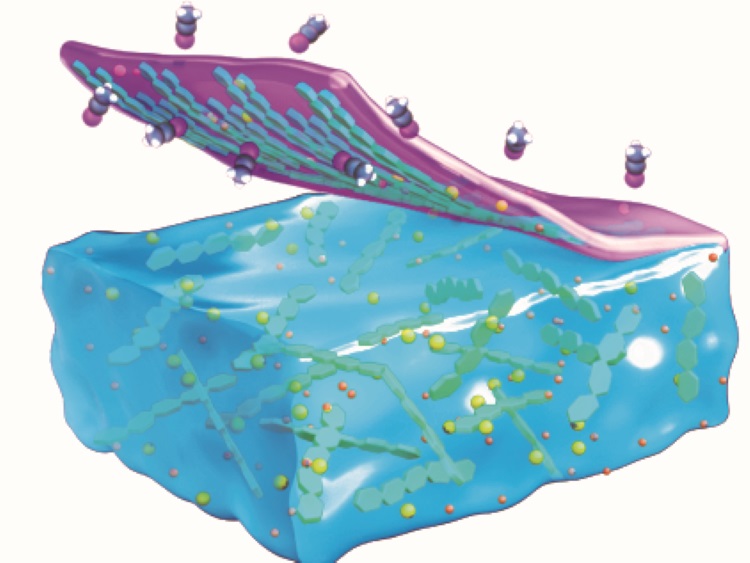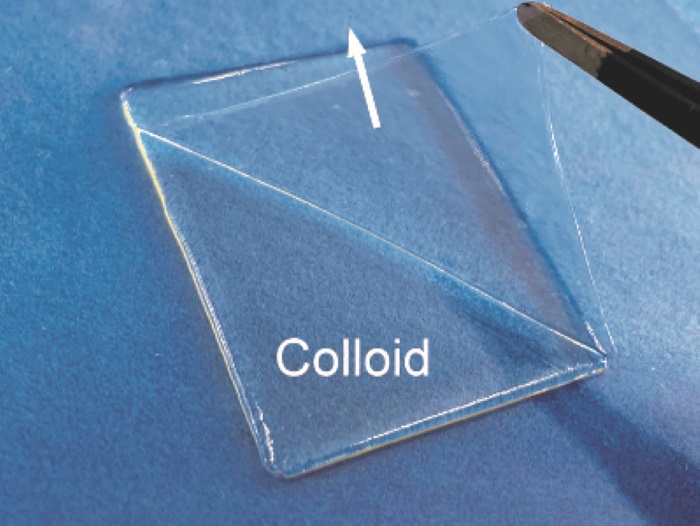A common chemical reaction that most people have seen first-hand is the inspiration for a new way to make a flexible gel film that could lead to innovations in sensors, batteries, robotics and more.
A research team led by Texas Engineers developed what they call a "dip-and-peel" strategy for simple and rapid fabrication of two-dimensional ionogel membranes. By dipping sustainable biomass materials in certain solvents, molecules naturally respond by arranging themselves into functional thin films at the edge of the material that can easily be removed using nothing more than a simple set of tweezers.
This strategy, the researchers said, was inspired by what happens to milk at elevated temperatures we often observe in daily life. 
“In the milk-skin effect, a film forms at the outer layer of milk when it is heated,” said Guihua Yu, a professor in the Cockrell School of Engineering’s Walker Department of Mechanical Engineering and Texas Materials Institute, who focuses on materials science. "We were inspired by this phenomena and explored it in different materials to produce multifunctional gel membranes that are easy to separate."
The research was published in Nature Synthesis.
These gels are made up of a polymer network surrounded by ionic liquid. They are similar to hydrogels in structure, where water is the liquid element. But, ionogels feature a less rigid structure, giving ions more room to move around.
Because of this, they are highly conductive and very sensitive. They have high potential as sensors, possibly as part of wearable electronics that could more accurately track motion, heartbeat and other aspects of health monitoring. They could even serve as the electrolyte in solid-state batteries, a part of the safer battery that shuttles ions back and forth to facilitate charging and discharging. 
The major innovation in the research is in the novel fabrication process, and it works on many different materials. The process can be reproduced hundreds or thousands of times at high speed and low cost. And the films can be easily manipulated to be as thick or thin as needed and shaped or coated to other materials.
“This simple yet effective solvent-induced self-assembly method really allows rapid, and scalable production of 2D functional polymer films from different sustainable biomass materials, including cellulose, chitosan, silk fibroin, guar gum and more," said Nancy (Youhong) Guo, one of the lead authors on the paper, a former graduate student in Yu's lab and now a postdoctoral researcher at MIT.
Yu said he hopes other researchers will pick up this technique and run with it for various technologies. Going forward, the research team will work to further optimize the mechanical properties for more applications and advanced functionalities for next-generation technologies such as wearable electronics, smart robotics and artificial intelligence.
This research also involves other collaborators from Northeast Forestry University and Shenyang University of Chemical Technology in China.

